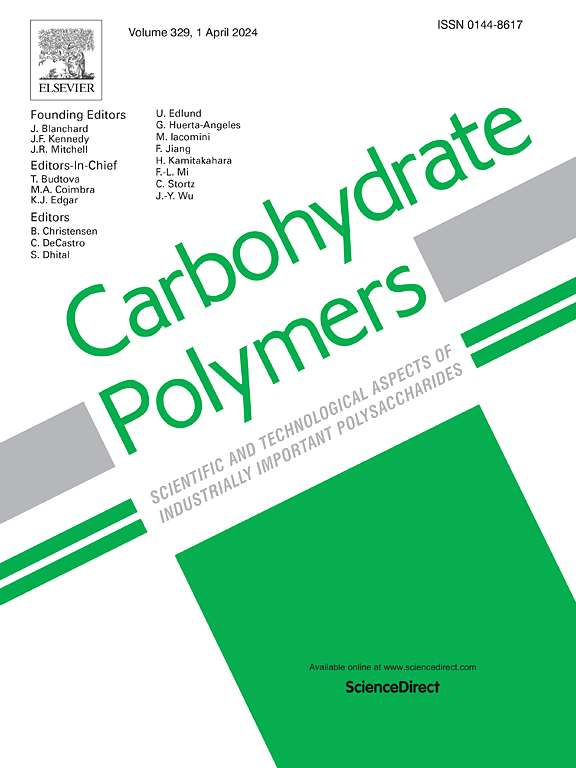Konjac glucomannan-based foams incorporating cellulose phase change microcapsules for efficient thermal energy regulation
IF 10.7
1区 化学
Q1 CHEMISTRY, APPLIED
引用次数: 0
Abstract
Biomass foam with porous structure has broad application prospects in thermal energy management. However, traditional foams can only passively insulate heat, unable to effectively store thermal energy and prolong the insulation time. In this work, microcapsules rich in paraffin were prepared using the Pickering emulsion template method with phosphorylated cellulose nanocrystals (CNC) as an emulsifier. Phase change microcapsules were combined with konjac glucomannan (KGM) foam to prepare thermal energy management materials with excellent thermal insulation and storage properties. The synergistic interaction between CNC and KGM molecules could form the hydrogen bond cross-linking network to further improve the water resistance and mechanical properties of foams. The encapsulation of CNC microcapsules and the capillary action of KGM foam could effectively inhibit paraffin leakage in the KGM/CNC/paraffin (KCP) foams. Moreover, the enthalpy of melting and crystallization of KCP-8 foam was 144.9 J/g and 141.3 J/g, respectively. The thermal conductivity and infrared thermal imaging results showed that KCP-8 foams exhibited excellent thermal insulation and heat storage properties. This study provides ideas for the design and preparation of porous foams with thermal regulation properties, which has great potential in the field of intelligent textile and building energy conservation.

求助全文
约1分钟内获得全文
求助全文
来源期刊

Carbohydrate Polymers
化学-高分子科学
CiteScore
22.40
自引率
8.00%
发文量
1286
审稿时长
47 days
期刊介绍:
Carbohydrate Polymers stands as a prominent journal in the glycoscience field, dedicated to exploring and harnessing the potential of polysaccharides with applications spanning bioenergy, bioplastics, biomaterials, biorefining, chemistry, drug delivery, food, health, nanotechnology, packaging, paper, pharmaceuticals, medicine, oil recovery, textiles, tissue engineering, wood, and various aspects of glycoscience.
The journal emphasizes the central role of well-characterized carbohydrate polymers, highlighting their significance as the primary focus rather than a peripheral topic. Each paper must prominently feature at least one named carbohydrate polymer, evident in both citation and title, with a commitment to innovative research that advances scientific knowledge.
 求助内容:
求助内容: 应助结果提醒方式:
应助结果提醒方式:


